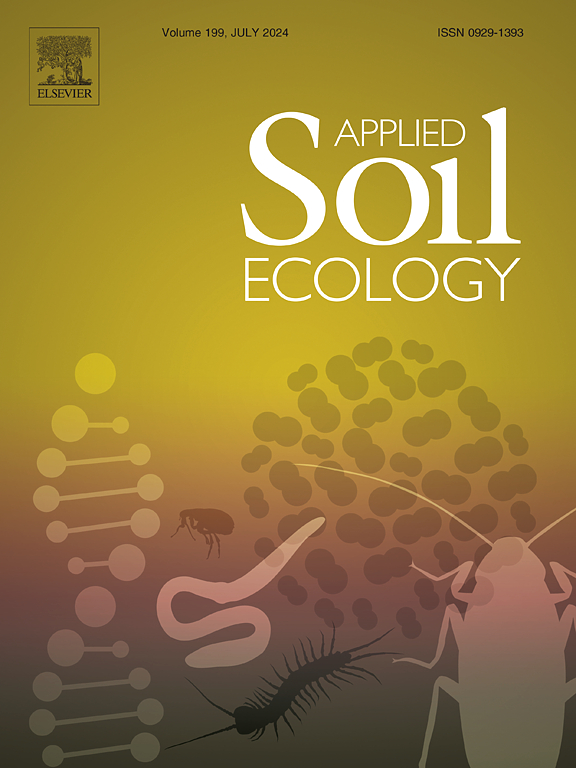废水灌溉后驱动白菜产量增加和致病风险降低的细菌群落:硝化抑制剂对不同土壤-蔬菜系统的影响
IF 5
2区 农林科学
Q1 SOIL SCIENCE
引用次数: 0
摘要
废水灌溉具有提高作物生产力的潜力,但可能对土壤-蔬菜系统的健康产生负面影响。本研究探讨了废水和硝化抑制剂双氰胺(DCD)和3,4-二甲基吡唑磷酸盐(DMPP)对不同土壤-蔬菜系统土壤潜在致病性和蔬菜产量的影响。与单纯废水灌溉相比,添加DMPP可通过改善蔬菜品质、增加内生细菌群落多样性和提高nirB基因丰度显著提高白菜产量。与对照处理相比,在中性和酸性土壤中,单独灌溉废水可使土壤潜在致病性分别提高17.39%和2.58%。在中性和酸性土壤中,与单独灌溉相比,增加DMPP可通过提高内生细菌群落稳定性和增加黏菌门、双单胞菌门、放线菌门和变形菌门的比例,分别使土壤潜在致病性降低2.87%和5.50%。本文章由计算机程序翻译,如有差异,请以英文原文为准。

Bacterial communities driving cabbage yield increases and pathogenic risks reduces following wastewater irrigation: Effects of nitrification inhibitors on different soil-vegetable systems
Wastewater irrigation has the potential to enhance crop productivity but could have negative impacts on soil-vegetable systems health. This study was conducted to explore the effects of wastewater and nitrification inhibitors dicyandiamide (DCD), and 3,4-dimethylpyrazole phosphate (DMPP) on the soil potential pathogenicity and vegetable yield in different soil-vegetable systems. The extra DMPP significantly increased cabbage yield by improving vegetable quality, increasing the endophytic bacterial community diversity, and enhancing nirB gene abundance, compared with wastewater irrigation alone. Compared with control treatment, wastewater irrigation alone increased soil potential pathogenicity by 17.39 % and 2.58 % in neutral and acidic soils, respectively. Relative to the wastewater irrigation alone, the extra DMPP could reduce soil potential pathogenicity in neutral and acidic soils by 2.87 % and 5.50 % via increasing the endophytic bacterial community stability and increasing the proportions of soil Myxococcota, Gemmatimonadota, Actinobacteriota and Proteobacteria, respectively.
求助全文
通过发布文献求助,成功后即可免费获取论文全文。
去求助
来源期刊

Applied Soil Ecology
农林科学-土壤科学
CiteScore
9.70
自引率
4.20%
发文量
363
审稿时长
5.3 months
期刊介绍:
Applied Soil Ecology addresses the role of soil organisms and their interactions in relation to: sustainability and productivity, nutrient cycling and other soil processes, the maintenance of soil functions, the impact of human activities on soil ecosystems and bio(techno)logical control of soil-inhabiting pests, diseases and weeds.
 求助内容:
求助内容: 应助结果提醒方式:
应助结果提醒方式:


